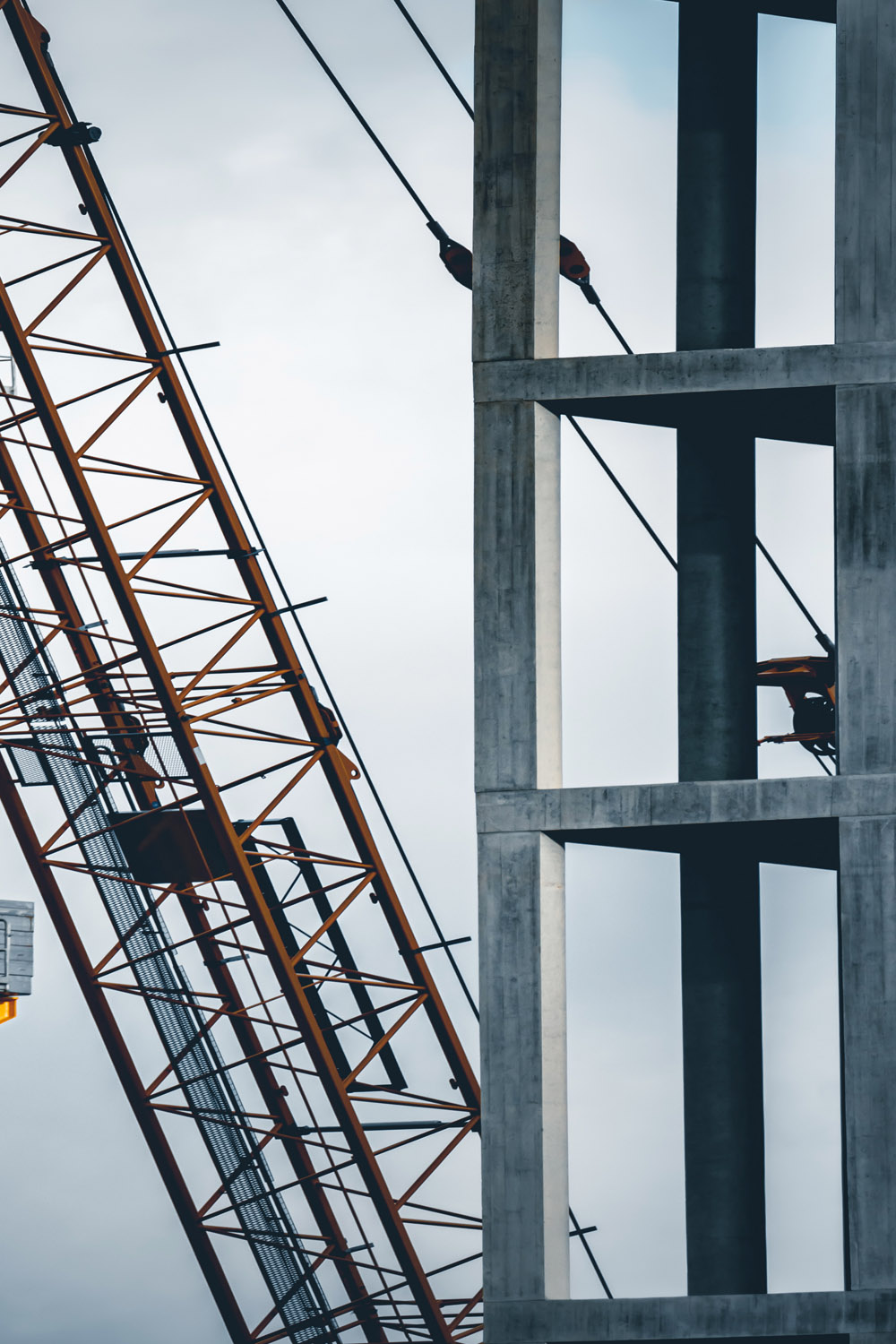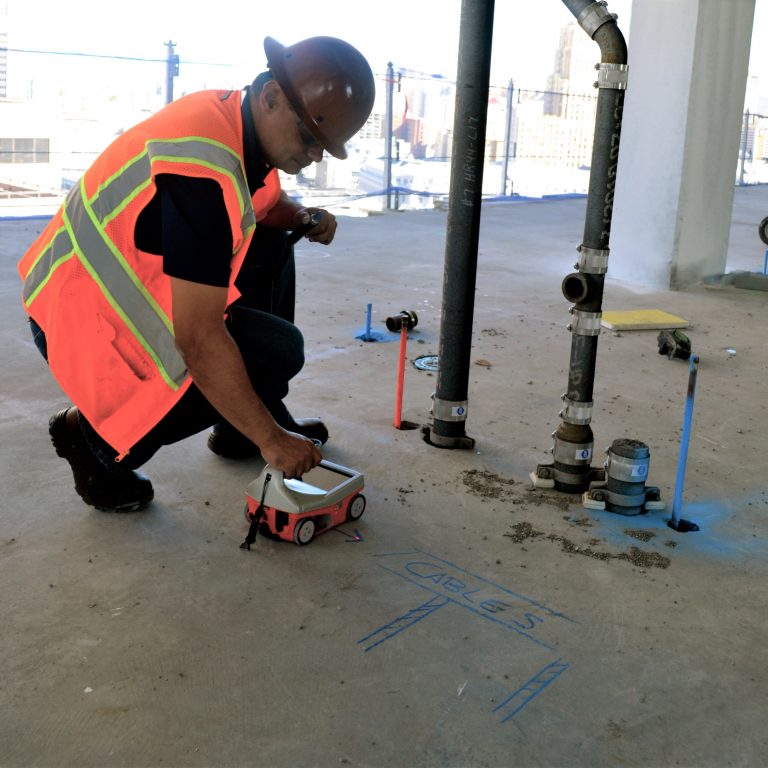Comprehensive Insights into Concrete Scanning Procedures
Comprehensive Insights into Concrete Scanning Procedures
Blog Article
Reveal the Transformative Power of Concrete Scanning in Making The Most Of Efficiency and Safety
Concrete scanning has arised as a vital device in the construction sector, using unparalleled advantages in boosting task efficiency and making certain security standards. By using innovative innovation, concrete scanning allows specialists to see past the surface, revealing covert complexities that could impact the architectural integrity of a building. The transformative power of concrete scanning depends on its ability to give thorough insights and real-time data, transforming how projects are planned and executed. As we look into the intricacies of this ingenious technique, a globe of opportunities opens up, showcasing a brand-new age of building methods that prioritize precision and protection.
Value of Concrete Scanning
Making sure the structural stability and safety and security of building and construction projects begins with the important action of performing comprehensive concrete scanning. Concrete scanning is a non-destructive approach used to find and map subsurface components within concrete frameworks. This process is vital in determining possible threats, such as rebar, post-tension cables, and conduits, that might be hidden within the concrete. By using sophisticated technologies like ground-penetrating radar (GPR) and electromagnetic induction, building teams can accurately situate these aspects without creating any damage to the framework.
Furthermore, concrete scanning aids in optimizing task timelines and budget by avoiding unforeseen prices and delays that may emerge due to unforeseen obstructions within the concrete. Inevitably, investing in complete concrete scanning is an aggressive method that enhances both effectiveness and security in construction jobs.
Just How Concrete Scanning Works
Concrete scanning operates as a critical device in building projects by utilizing advanced innovations to spot and map subsurface aspects without triggering architectural damages. Ground Permeating Radar (GPR) and Electromagnetic Induction (EMI) are 2 main methods used in concrete scanning. GPR works by emitting high-frequency radar pulses into the surface area, which recover when they come across subsurface things or voids. The moment taken for the signal to return indicates the depth and location of the items. EMI, on the various other hand, utilizes electro-magnetic fields to identify differences in material compositions, such as determining rebar or channels within concrete structures.
During the scanning procedure, the data collected is analyzed in real-time, allowing prompt identification of potential threats or barriers under the surface. This information aids in decision-making, making sure that building tasks continue safely and effectively. Furthermore, 3D imaging software program can be used to produce thorough maps of the subsurface components, additionally enhancing task preparation and execution. By employing these advanced modern technologies, concrete scanning considerably lowers the threat of expensive problems and injuries on building and construction websites.
Benefits of Concrete Scanning
One of the primary advantages of concrete scanning is the capability to discover and locate embedded items such as rebar, post-tension wires, and avenues precisely. Concrete scanning assists in planning and making more effectively, as it gives exact details regarding the place and depth of architectural parts.

Situation Researches: Concrete Scanning Success

In an additional instance, a building company utilized 3D concrete scanning to evaluate the condition of aging concrete structures in a historical building. The thorough scans supplied useful understandings into the degree of deterioration and aided focus on maintenance initiatives successfully. By proactively dealing with areas of worry recognized with scanning, the firm had the ability to prolong the life expectancy of the framework and make certain owner security.
These instance research studies underscore the transformative power of concrete scanning in improving efficiency, precision, and security in building and construction jobs.
Carrying Out Concrete Scanning in Projects
Applying innovative scanning technologies during construction this contact form projects has actually become increasingly vital for improving precision and safety. By integrating concrete scanning into project planning and implementation, construction teams can recognize potential hazards, such as rebar or post-tension cable televisions, concealed within concrete structures. This aggressive technique minimizes the threat of mishaps, delays, and expensive rework, eventually bring about more efficient task timelines and budgets.
To execute concrete scanning properly, project supervisors ought to team up closely with experienced scanning specialists to figure out one of the most ideal scanning methods for the specific job needs. Engaging scanning experts from the beginning of a project allows the team to create comprehensive scanning strategies that attend to key areas of issue and ensure complete data collection.
Additionally, integrating concrete scanning right into normal project workflows can enhance decision-making procedures, as real-time check information provides instant understandings right into the condition of concrete frameworks - Concrete Scanning. This data-driven strategy assists in notified analytical and makes it possible for groups to make adjustments quickly, her response promoting a culture of performance and safety and security throughout the job lifecycle

Verdict
In final thought, concrete scanning plays a crucial duty in enhancing performance and security in building jobs. By using innovative technology to discover and map out underlying frameworks within concrete, this process helps to avoid costly mistakes, make certain architectural stability, and reduce dangers on site. With the capacity to reveal concealed aspects and supply exact data, concrete scanning verifies to be a beneficial tool for maximizing task results and making the most of total success.
Concrete scanning is a non-destructive approach utilized to detect and map subsurface components within concrete structures. Additionally, concrete scanning aids in maximizing job timelines and budget plan by staying clear of unexpected prices and hold-ups that may emerge due to unpredicted obstructions within the concrete. One noteworthy case study entails a large-scale remodelling task where concrete scanning played an essential function in ensuring project success.In another instance, a building and construction firm used 3D concrete scanning to analyze the problem of aging concrete structures in a historic building. her latest blog By incorporating concrete scanning into project planning and execution, construction groups can recognize possible hazards, such as rebar or post-tension cords, hidden within concrete frameworks.
Report this page